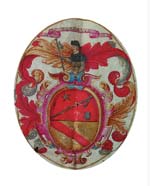Per una storia della Compagnia di San Paolo (1563-1853) – Vol. I
by W. Crivellin and B. Signorelli (editors)
The Quaderno opens with the essay Gli atti ritrovati: fonti per lo studio della Compagnia di San Paolo, in which Cecilia Laurora and Maria Paola Niccoli provide the cataloguing of all the documents – about one hundred – concerning the Compagnia and associated institutions registered with the Ufficio dell’Insinuazione in Turin between 1610 and 1635, and kept at the State Archives in Turin. For each deed are indicated, alongside the register and date, the names of witnesses and of the notary. Mainly they are receipts for amounts loaned or collected and for the setting up of “censi” by the Compagnia, the Ufficio pio, the Casa del soccorso and the Monte di pietà, which testify to the considerable amount of investments. Of further interest are some deeds for the appointment of officials and rendering of accounts.
In the second essay, Reti di credito e composizione sociale della Compagnia di San Paolo. Un’analisi attraverso i lasciti conservati presso l’Archivio Storico della Compagnia di San Paolo, Blythe Alice Raviola analyses donations, bequests and legacies received between 1563 and 1630 considering them as “instruments of credit and forms of self-representation”, not unconnected among themselves, but often the fruit of a precise plan of the rectors and councillors. Most of the legacies give preference as beneficiary to the Casa del soccorso, perhaps this was related to the considerable increase in single women, because of the Provence war. Varied and complex networks of relationships emerge between the brethren and the beneficiaries, with the city authorities and the court, with the ecclesiastical hierarchy and religious orders.
The process of the aristocratisation of Compagnia is confirmed in the third essay, by Nicolina Calapà, I Baronis: da mercanti e banchieri a conti di Buttigliera d’Asti. Ascesa economica e sociale di una famiglia nella Torino del Seicento. Of great interest is the study of the evolution of the Baronis’ activity, from Filiberto being awarded the contract for selling salt to the inclusion of his sons in European financial circuits, and who set up various companies specialised in exchange and merchandise, including one in Antwerp. Through the loans made to the sovereign, the collection of financial aid from foreign powers and diplomatic missions, Carlo managed to become a nobleman, while his brother Ottavio specialised in the supply of jewels, and precious cloths and furnishings to the Royal House.
Per una storia della Compagnia di San Paolo (1563-1853),
edited by W. Crivellin and B. Signorelli, vol. I, Torino, 2004




